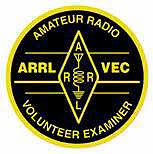Since we’re involved in amateur radio and emergency communications we tend to make amateur radio the focus of our involvement in emergency communications. It’s understandable, but can sometimes make us lose sight of our mission.
We use the term “Emergency Communications” rather than “Amateur Radio Communications” because the mission is first, and most importantly, to communicate in an emergency.
However, we should look at ourselves as a resource beyond using amateur radio. Let’s look at a few examples of how we can use our skills beyond keying a microphone.
1) Message Handling. Sure, during message handling with the National Traffic System we’ll communicate messages from one radio operator to another to get it to the destination. However, at some point in time we pick up a phone to deliver the message or hand-deliver it to the recipient.
2) Special Events. Amateur radio operators often volunteer for bike and foot races. The mission there is often to facilitate assistance to an injured participant or to notify those in charge that the last participant has passed a checkpoint. We’re doing more than communicating, we’re participating.
3) Alternative radio services. I was recently at an event where people were staged about 200 feet apart and yelling information up the line to get it to the stage where event participants’ names could be called out as the finished. Sure, we could have stuck amateur radio operators at both ends, but I just grabbed a couple FRS radios and handed them to the people at each end. I provided communications assistance but not the actual service.
4) FRS and CB as tools. We shouldn’t ignore utilizing FRS or CB when circumstances warrant it. Imagine how useful FRS radios might be in a shelter where key people could relay information to each other or make contact with the amateur radio operator to pass tactical traffic between shelters.
5) Our involvement with the National Weather Service SKYWARN program is another example of being more than mere communicators, we’re trained observers who participate.
6) Organizations like the Salvation Army and the Red Cross expect their communications personnel to be responders who communicate, not communicators who respond.
In summary, we should think of our mission as being communicators of formal traffic and tactical traffic but we should also think in terms of being providers of operations assistance, when requested, for those we serve.




